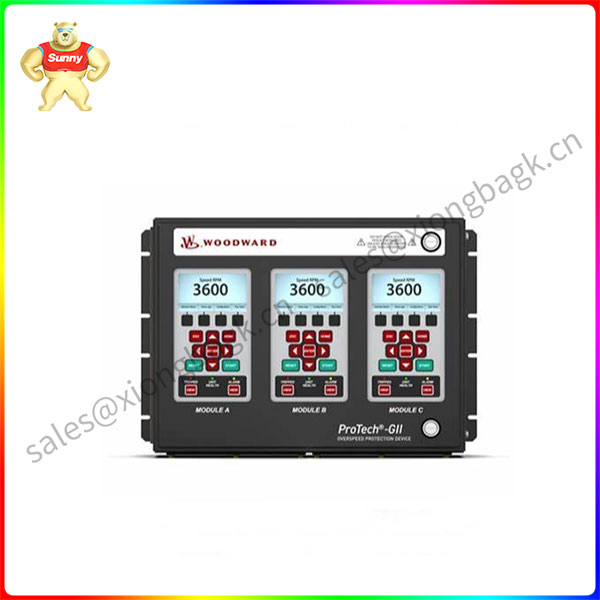Woodward’s ProTech-GII overspeed Protection is an overspeed detection system, model 8237-2597, designed for steam, gas and hydraulic turbines. The system is capable of safely shutting down the turbine when an overspeed or over-acceleration event is detected to ensure the safety of equipment and personnel. It features two dual redundant tripping relay outputs using a two-out-of-three voting architecture, or three separate non-voting tripping relay outputs with separate alarm relays, 4-20mA speed readings, and Modbus® communication for easy integration into any turbine safety system.
The ProTech-GII overspeed protection device accurately monitors turbine rotor speed and acceleration through an active or passive MPU (electromagnetic pickup) and sends a stop command to the turbine’s gate jump valve or the corresponding trip system. It consists of three independent modules, which can be configured as an independent output or a 3 out of 2 configuration of comparison results as required. The device also provides overspeed and overacceleration capabilities as well as time-stamped alarm and trip logs, all of which provide an indication that the test was active at the time of the event, and a precursor indication for the trip log.

8237-1367
In addition, ProTech-GII overspeed protection devices comply with API-670, API-612, API-611 and IEC61508 (SIL-3) standards and have extensive diagnostic and firewall mechanisms to eliminate common causes of failure in control and safety circuits. It also features mode-to-module learning and a plug-and-play chassis for easy replacement, with a fast response time (8-26 ms, depending on model and configuration) and a speed range of 0.5 to 32,000 rpm.
ProTech-GII overspeed protection is designed to meet high standards of product reliability, with optional redundancy at the I/0, controller and communication levels for maximum flexibility. It also has a real-time clock feature to ensure accurate time recording and uses a special time equalization feature to ensure module-to-module clock synchronization to meet different compliance requirements, including CSA certification in North America and EMC and ATEX directives in the EU.
 中文版
中文版




